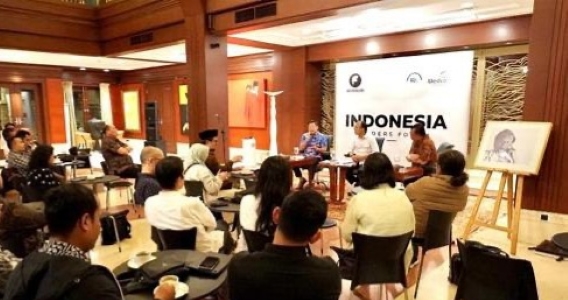Rector of IPB University: Prediction and Inclusion, Key Words to Improve Indonesia’s Food Security

Rector of IPB University, Prof Arif Satria said that there are two keywords to build stronger agriculture and national food security. These keywords are prediction and inclusiveness to strengthen the food sector.
The prediction in question is through technology and innovation which is the strength of Indonesian agriculture as well as in facing the acceleration of a more precise agricultural transformation.
“A more advanced agriculture must start from innovation because a country’s per capita income is closely correlated with a high Global Innovation Index score. The economic level is also positively correlated,” he said at the AP Dialog Rumah Kebangsaan with the theme ‘Strengthening Partnerships in Improving Food Security from Upstream to Downstream in Indonesia’ at Griya Arifin Panigoro, Jakarta.
“Artificial intelligence and 4.0-based technology must be developed to face the challenges of accelerating transformation, so as to overcome problems in terms of seeding and in terms of post-harvest, namely food loss,” he explained.
Meanwhile, according to Prof Arif, the principle of inclusivity is aimed at small farmers through land protection. All parties from various classes are embraced together to build agriculture.
“We must build agriculture by embracing all classes based on the experience of the third world like Indonesia. Large farmers are encouraged, the middle ones are raised and the small ones are protected so that all are touched,” he added.
“The principle of inclusiveness must be encouraged so that the acceleration of transformation 4.0 becomes less homogeneous,” he continued.
Prof Arif emphasized that technological development can solve problems at the upstream and downstream levels as well as the problem of land inclusiveness. At the post-harvest level, technology can reduce the food loss rate to three percent resulting in an eight percent increase in food availability.
“Meanwhile, on the land side, technology can create a platform to monitor land conversion with precision, so as to provide a better execution framework in the field for productive lands. In addition to encouraging sustainable agricultural land protection policies,” said Prof Arif. (MW/Rz) (IAAS/TNY)



